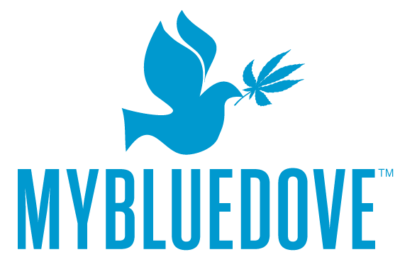History of tincture/History of CBD tincture
Tinctures have been around for as long as alcohol has been around. The use of plants to make tinctures has also been done for thousands of years. The modern medical interest of cannabis is attributed to Irish physician William Brooked O’Shaughnessy and his work in 1839, but the earliest evidence of cannabis use dates back to 2700 BC. The earliest use of cannabis as a medicine is attributed to Emperor Shen Nung; his teachings were passed down by word of mouth until the teachings were published in Shen Nung Pen-ts’ao Ching, a second – century Chinese book of herbal remedies. Throughout history, cannabis tinctures were made by soaking the entire cannabis plant in alcohol, resulting in a tincture with all types of cannabinoids like THC, CBD, and more. In the cannabis industry, that is called a “Full – spectrum” tincture since it was made using the whole plant. Now, tinctures come with specific cannabinoids, like CBD, due to advancements in extraction processes that separate them from the plant. You can now find tinctures with only THC, only CBD, a ratio of THC:CBD, and even other cannabinoids such as CBN, THV, CBG, etc.
Tinctures are like super-concentrated herbal oils. They are made by soaking herbs in alcohol, but traditionally, they are made with vodka or brandy. The alcohol helps to extract the appropriate chemical compounds from the plants, leaving unnecessary plant matter behind. After waiting about four weeks, the liquid is separated from the herbs. Typically, tinctures are taken sublingually, which means placing drops under your tongue and letting them sit there for 15 – 30 seconds. The tincture oil can be absorbed faster since plenty of veins are under the tongue. This will allow the substance to enter your bloodstream more quickly. Tinctures are just one way to take in cannabis and/or other herbs.
The My Blue Dove line contains Broad-Spectrum and Isolate options. Both are made by extracting the cannabinoids from the plant using a proprietary extraction method and then reintroducing those extracted cannabinoids to the MCT oil. It is resulting in a tincture with just two ingredients: Cannabis oil, and MCT Oil. The MCT Oil acts as a carrier for the cannabis oil, and this, in turn, helps the body absorb the oil.
You can find three types of tinctures on the market: Full spectrum, Broad spectrum, and Isolate. The full spectrum is when the whole plant is involved, and the tincture will have more than just the CBD cannabinoid. Broad-spectrum will have CBD and some other cannabinoids like THC. For broad-spectrum tinctures, you can find various ratios to help identify how the tincture will most likely make you feel. For example, a 1:2 CBD:THC will have more psychoactive effects(due to the THC) than a 2:1 CBD:THC, which will most likely not. You can even find 1:1:1 on the market. Isolate is when the tincture contains only one cannabinoid. Typically, it will be CBD or THC, but with the advent of various cannabinoid studies, we are finding CBN and CBG isolate tinctures on the market.
My Blue Dove is different because it only has cannabis oil. The main ingredients are MCT Oil and Cannabis. The simple approach works best. That’s why we don’t include other “essential” oils such as lavender, rosemary, etc.
According to a study in the Brazilian Journal of Psychiatry, CBD can be used to treat anxiety and depression. There have been multiple studies that provide the basis of support for the FDA’s decision for CBD to be used to treat epilepsy. It can even be used to treat pain. In a study conducted in 2020, scientists applied topical CBD to a cohort of individuals experiencing symptomatic peripheral neuropathy, a condition stemming from damage to the nerves in the brain and spinal cord. Meanwhile, another group with a similar condition was given a placebo. The findings revealed a noteworthy decrease in intense, sharp pains and relief from cold, itchy sensations among those who utilized the topical CBD, in contrast to the group receiving the placebo. Notably, none of the participants reported any adverse side effects.
With more studies like “The Health Effects of Cannabis and Cannabinoids: The Current State of Evidence and Recommendations for Research” being conducted, a product like this can be used as a pain reliever to help treat nausea and, for some, to help induce an appetite. Since these tinctures contain 1000mg of THC per bottle and 33mg of THC per ml, it is essential to understand the tolerance level of a user. This tincture, in particular, would be an unwise choice for the cannabis novice since it is recommended to micro-dose when beginning to use cannabis. The best time would be in a home environment with no upcoming obligations. Per CA law, cannabis should only be ingested at home. Morning or night, one should be at home when consuming the My Blue Dove Tincture.
Ideally, this is for the intermediate to advanced user. 33mg of THC in a milliliter is too much for a beginner to ingest. Too much THC can be a bad experience, and it is in everyone’s best interest to avoid that. Per anecdotal evidence, opiate users have shifted to high doses of THC and CBD for their pain relief. Along with recreational use, this tincture can be for users experiencing pain, nausea, and inflammation.
Each My Blue Dove tincture has a dropper that allows you to dose milliliter by milliliter. Each ml equals 33mg of THC. The best and quickest way to ingest is sublingual. You place the drops under the tongue and leave the substance there for 15-30 seconds before swallowing. If the user wants to avoid tasting the tincture, one can place the drops in their drink and ingest it that way. According to anecdotes, some users like to put their drops on crackers to consume their cannabis by eating.
References:
Medical News Today
NCBI
Forbes
HowdyCBD
Nature
NCBI
Birch Bark Botanicals








